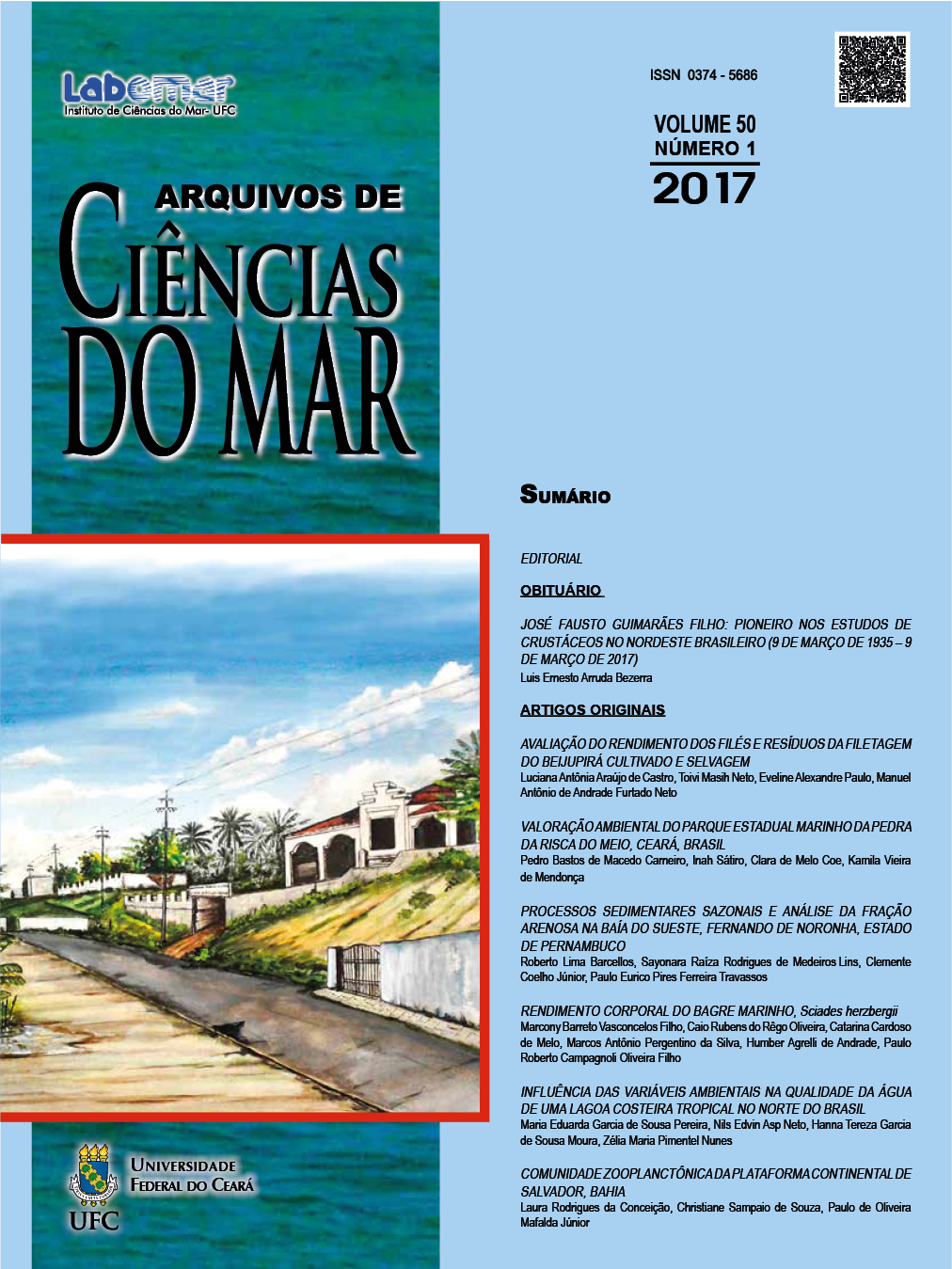Environmental valuation of Pedra da Risca do Meio Marine State Park, Ceará, Brazil
DOI:
https://doi.org/10.32360/acmar.v50i1.19286Keywords:
protected area management, use and non-use values, contingent valuation.Abstract
The establishment of protected areas is an efficient way to ensure nature conservation, but these areas are frequently managed without objective criteria for resource allocation, what often results in insufficient funding. In order to contribute to the management of marine protected areas in Brazil, this paper aims to estimate use and non-use values of Parque Estadual Marinho da Pedra da Risca do Meio, located in Ceará state, through the contingent valuation method. One hundred and five (105) interviews were conducted with residents of Fortaleza, Ceará, and the influence of sociological variables (summarized by descriptive statistics) on the Willingness To Pay (WTP) for the maintenance of the Park was studied through linear models. Total willingness to pay was calculated by multiplying WTP by the involved population. On average, respondents were willing to expend R$21.50 / month for the maintenance of the Park, an amount that was higher in the case of users and people of higher incomes. Considering only users, the use value amounts to R$964.080 / year. These results highlight the importance of this protected area and emphasize the need of new financing strategies for its maintenance. Increased incentives for visitation, collection of fees and the payment for environmental services seem to be well-accepted financing mechanisms, which are equally applicable to other Brazilian marine protected areas, and therefore can contribute to the conservation of the country’s coastal zone.
Downloads
Downloads
Published
How to Cite
Issue
Section
License
1. Proposta de Política para Periódicos de Acesso Livre
Autores que publicam nesta revista concordam com os seguintes termos:
- Autores mantém os direitos autorais e concedem à revista o direito de primeira publicação, com o trabalho simultaneamente licenciado sob a Licença Creative Commons Attribution que permite o compartilhamento do trabalho com reconhecimento da autoria e publicação inicial nesta revista.
- Autores têm autorização para assumir contratos adicionais separadamente, para distribuição não-exclusiva da versão do trabalho publicada nesta revista (ex.: publicar em repositório institucional ou como capítulo de livro), com reconhecimento de autoria e publicação inicial nesta revista.
- Autores têm permissão e são estimulados a publicar e distribuir seu trabalho online (ex.: em repositórios institucionais ou na sua página pessoal) a qualquer ponto antes ou durante o processo editorial, já que isso pode gerar alterações produtivas, bem como aumentar o impacto e a citação do trabalho publicado (Veja O Efeito do Acesso Livre).

